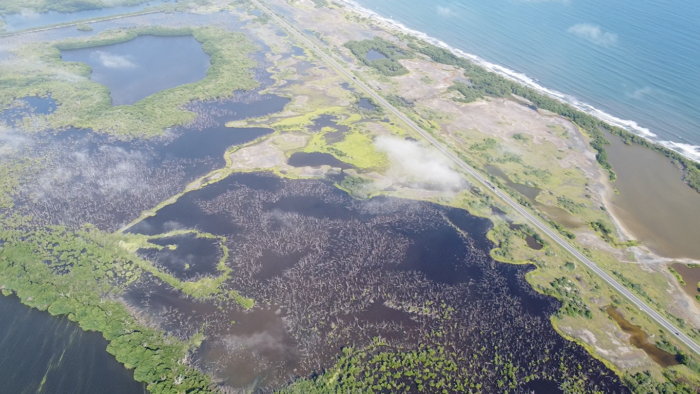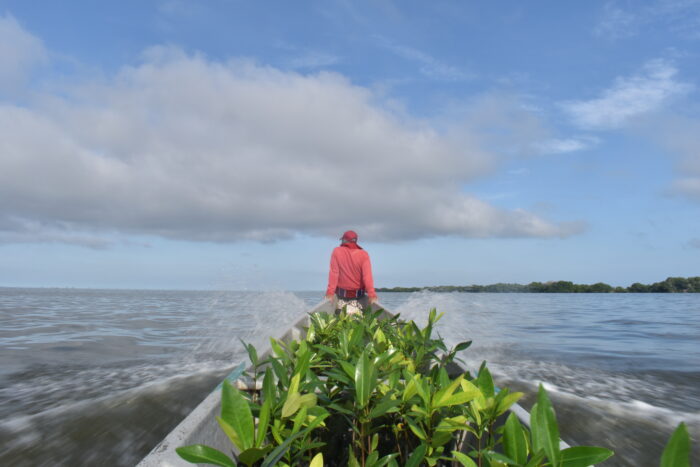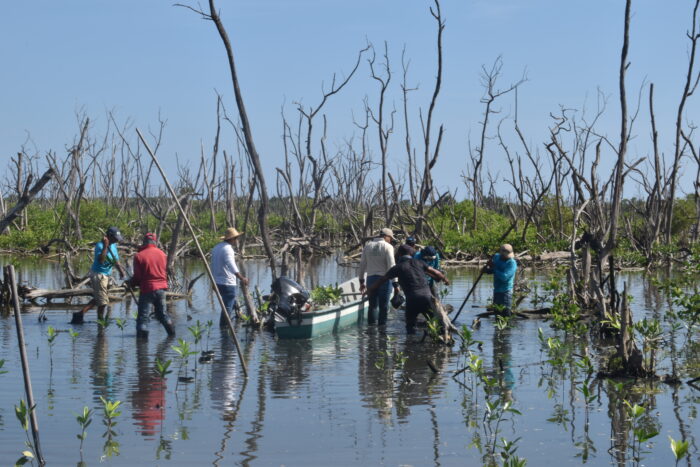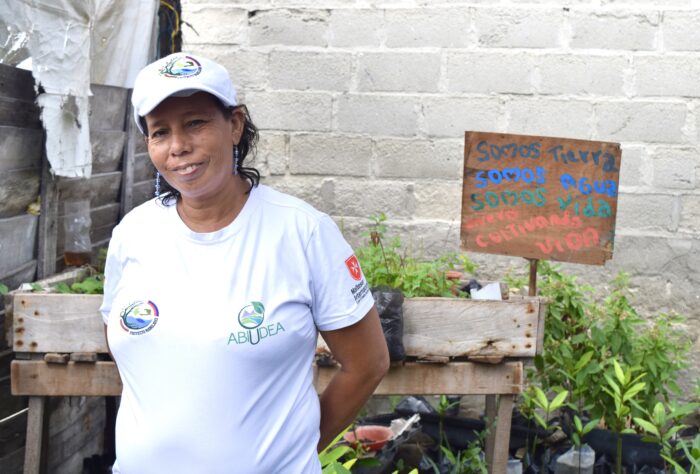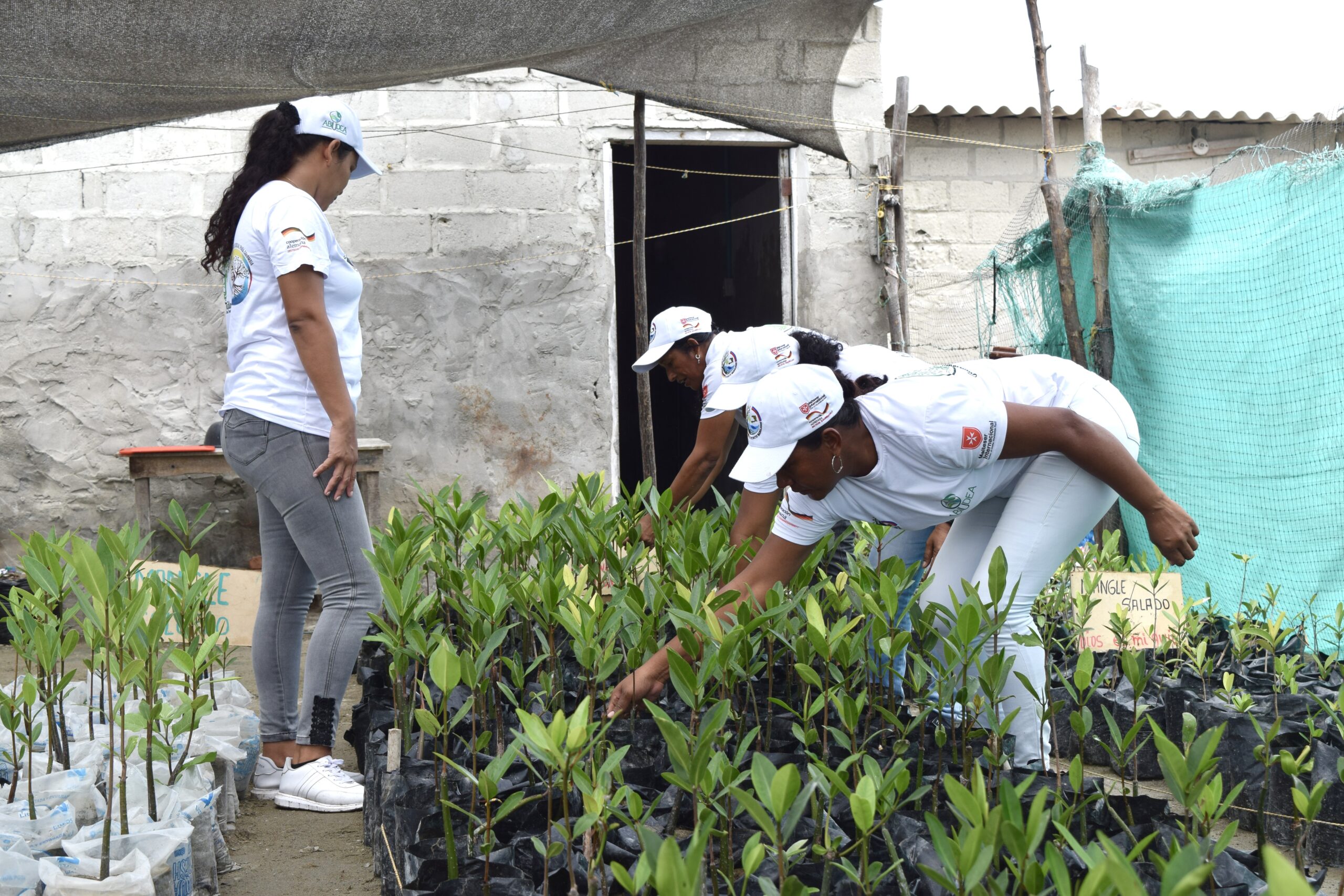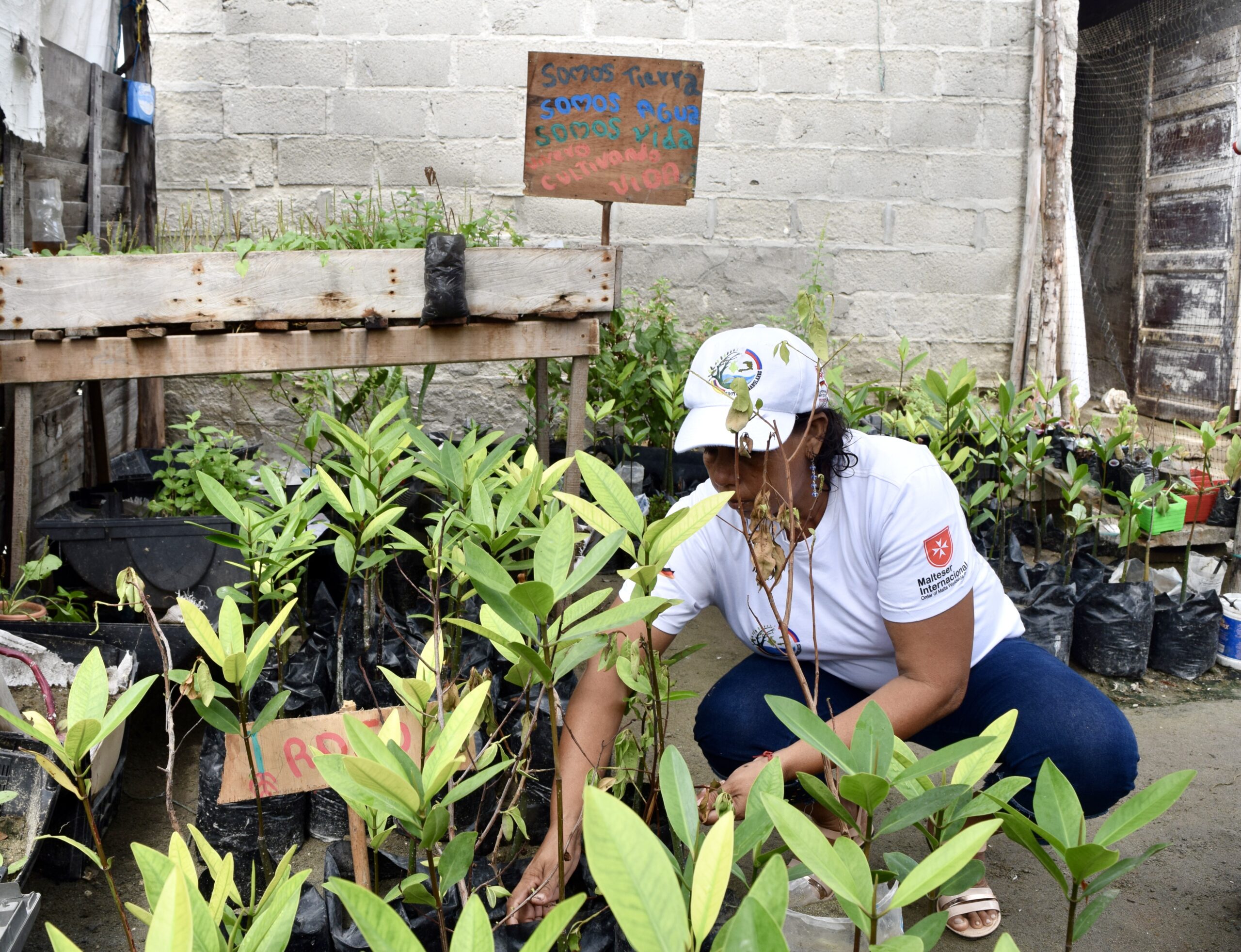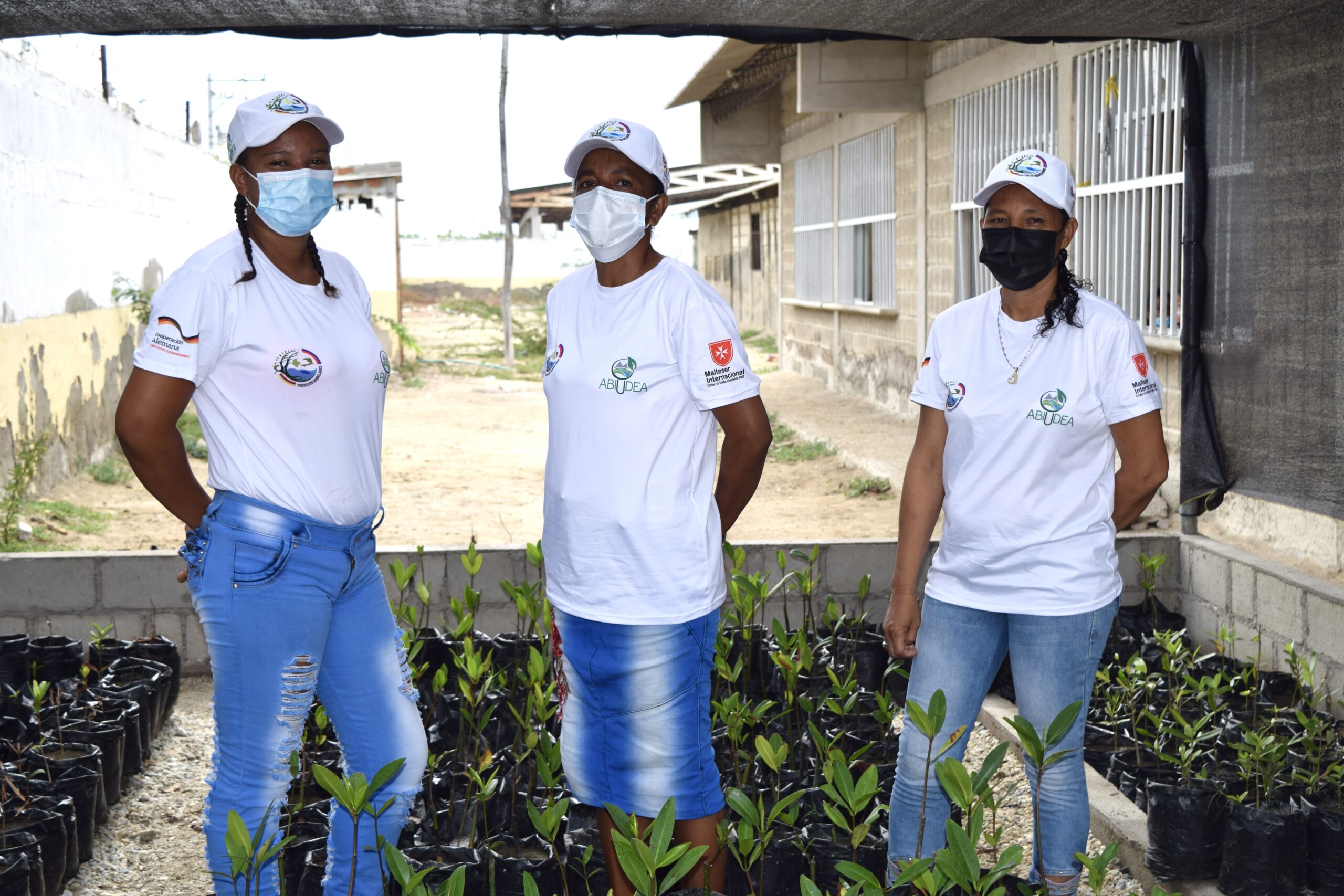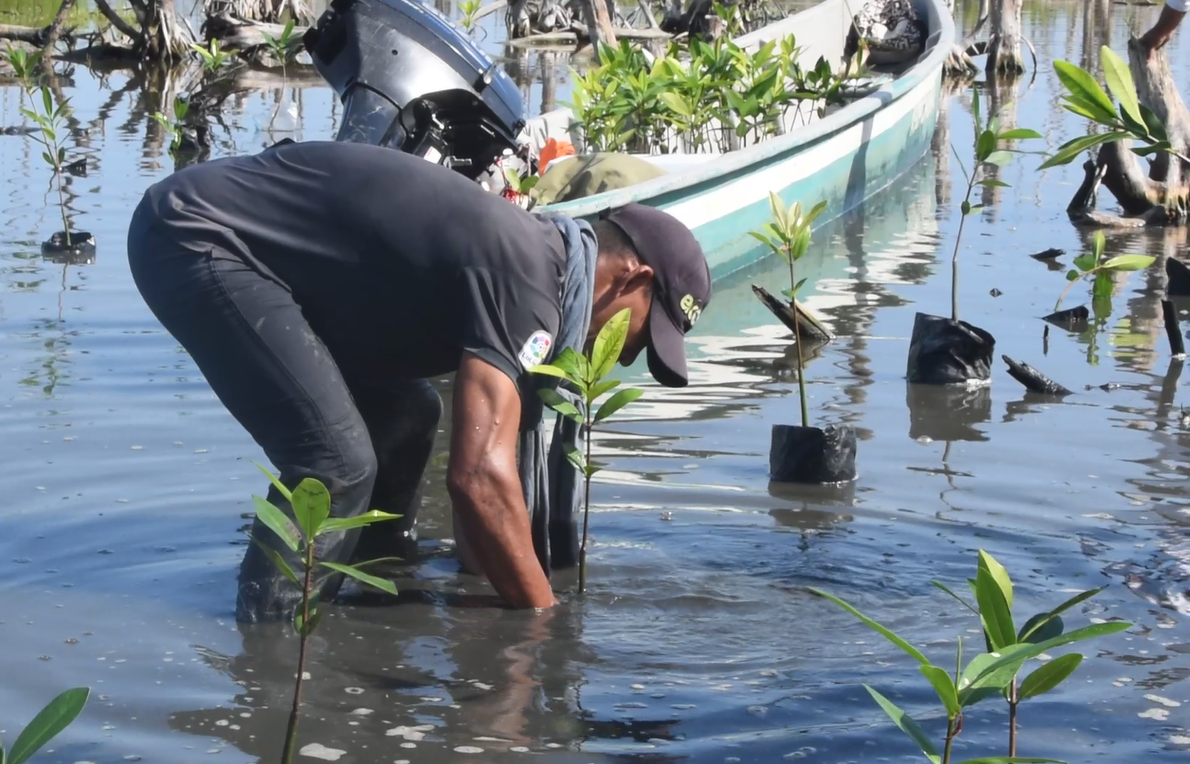South America
Colombia: Mangrove Restoration
Mangrove forests absorb almost four times as much carbon as terrestrial forests, making them vital to strategies to reach net-zero carbon emissions by 2050. These ecosystems stabilize coasts, reduce coastal erosion, and are homes for fish, shellfish, and other wildlife.
Malteser International Americas is working with female heads of household, fishermen, and students from the islands of Rosario and Tasajera in the department of Magdalena, Colombia. Our focus is on mangrove ecosystem restoration, conservation of the area, recycling management and environmental education. The project is strengthening sustainable economies for the communities that live along the border of the Ciénaga Grande de Santa Marta and generating new understanding and best practices for the protection and restoration of the mangroves.
“Experts estimate mangroves to be worth at least $1.6 billion per year in ecosystem services with a worth of $33,000 – $57,000 per hectare per year. It is estimated that more than 1 billion people are within 100 km of seagrass meadows and 100 million people live within 10km of significant mangrove areas” United Nations Environment Program (UNEP)
Ways We Help:
- Nursery building: We contribute to the creation of nurseries located in strategic areas in the township of Tasajera.
- Reforestation of thirty hectares of mangroves: We work on the reforestation of mangrove forests in prioritized areas in the affected zones.
- Alternative economies: We strengthen local communities by providing them with new income earning opportunities, with educational approaches that are both sustainable and resilient.
- Promotion of environmental education: We train young people in environmental conservation and recycling, which has a multiplier effect for students, female heads of households, and fishermen.
Our Results:
- Creation of three community nurseries in the neighborhood of Adonai, a school in Tasajera and a fishermens association (Criapez) on the Island of Rosario in the Ciénaga Grande de Santa Marta.
- Cultivation of 6,000 mangrove seedlings.
- Rehabilitation work in three canals affected by the death of the mangrove forests, this is necessary for the in and outflow of the water to the Ciénaga.
- Establishment of the Association of Resilient Women in Tasajera.
- Development of classroom curriculum for 100 students in the school of Tasajera, including environmental awareness.
- Up until December 2022, we have planted a total of 4,000 mangrove trees in the Cienega Grande de Santa Marta.
Success Story:
The Ciénaga Grande de Santa Marta is the largest lagoon complex in Colombia. In 1956 the area had 51,000 hectares of mangroves, but in an ecological catastrophe a highway was constructed through the mangroves causing widespread destruction and damage to the environment. The Ciénaga-Barranquilla highway completely separated the mangroves from the sea, causing a massive water imbalance and lack of salt water, destroying vast areas of the mangroves. During this time mangrove areas were dismissed as swampy wastelands, but in the last few decades there has been increasing recognition of their vital role in biodiversity conservation, disaster risk reduction and mitigating climate change.
In 2000 the Ciénaga Grande de Santa Marta was declared a UNESCO Biosphere Reserve and RAMSAR site, outlining its critical importance in providing biodiversity to the region and providing protection against further damage.
Malteser International Americas started working in 2021 with local partners and key funding from the German Federal Ministry for Economic Cooperation and Development (BMZ) to restore the area, which had decreased to 39,899 hectares of mangroves, much of which was degrading further.
One of the most affected areas was in the township of Tasajera, which is wedged between the Atlantic Ocean and the river delta. The revitalization has begun in this area, where we hope to restore 30 hectares of mangroves using 33,000 seedlings spread over 3 nurseries by 2023.
Women of Tasajera and their support for the reforestation of the Ciénaga Grande de Santa Marta
Ivonne, 47 years old, has experienced first-hand the catastrophic impact that the creation of the highway has had on her community and the health of the mangrove. Where once huge coastal vegetation dominated the horizon, a wasteland resides. Once the area provided for the community, including vast fisheries to feed the region, now there is little to go around.
Ivonne works with a group of 22 single mothers in the village of Tasajera to restore the mangrove, planting thousands of seedlings, providing new sources of income and building community cohesion.
“In my patio this dream started and we have made it a reality. We have been worried about the deterioration of the Ciénaga Grande and planting mangroves has helped us counteract it. It is very satisfying to see what we have accomplished so far. We can leave a legacy for our kids. We want to incentivize them to learn how to take care of the mangroves. We want to empower them because we are empowered women. Our slogan is ‘We are earth, we are water we are life’. If we pass our hand when we are sweating we find mud, if we look at our sweat it is water. We are earth, we are water, we are life. Same goes for our plants”.
Watch the video below to hear the full story and see how the region is being restored.
